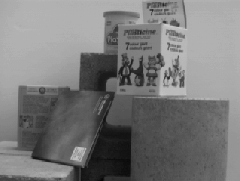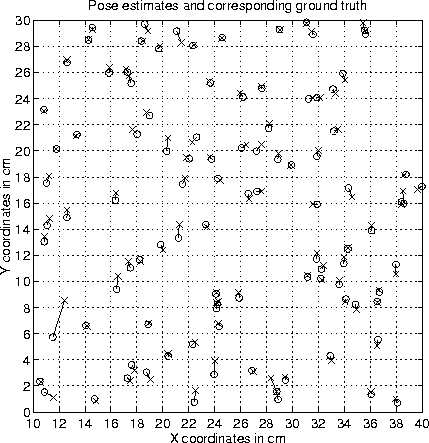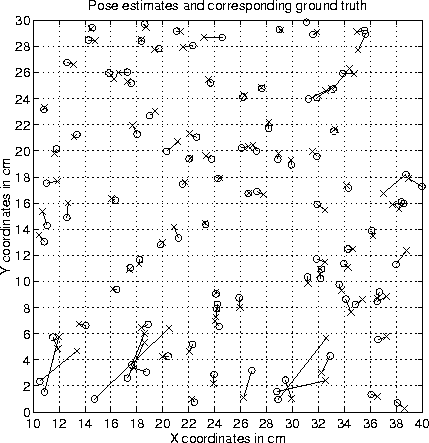
Figure 6.9: Scene II.
In this section we consider a slightly more complicated scene, a
larger configuration-space and a lower sampling density (or higher
sample spacing). Scene II is depicted in Figure 6.9. As
in Scene I, the camera is mounted on the end-effector of a
gantry-mounted robot arm. The camera faces the scene at a fixed
orientation from a distance of about 1.0m, and 256 training images are
collected at 2.0cm intervals (![]() =2.0cm) over a 30cm by 30cm grid.
100 images are taken from random poses as test subjects. As in Scene
I, the x-axis lies in the image plane of the camera pointing to the
right, and is parallel to the horizon. The y-axis is perpendicular to
the image plane of the camera, pointed in the direction that the
camera faces.
=2.0cm) over a 30cm by 30cm grid.
100 images are taken from random poses as test subjects. As in Scene
I, the x-axis lies in the image plane of the camera pointing to the
right, and is parallel to the horizon. The y-axis is perpendicular to
the image plane of the camera, pointed in the direction that the
camera faces.
Figure 6.10 demonstrates the accuracy of the method
for ![]() and
and ![]() . The mean error in position is
0.38cm or 19% of
. The mean error in position is
0.38cm or 19% of ![]() .
.

Figure 6.11: Scene II pose estimates for 100 test cases, ![]() and
and
![]() . The mean estimation error is 0.38cm
. The mean estimation error is 0.38cm
In the case of appearance-based estimation, Figure 6.11
demonstrates the accuracy of the method for ![]() and
and
![]() . The mean error in position is 0.8cm, or 40% of
. The mean error in position is 0.8cm, or 40% of
![]() .
.

Figure: Scene II pose estimates for 100 test cases, ![]() and
and
![]() . The mean estimation error is 0.8cm
. The mean estimation error is 0.8cm